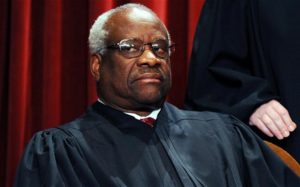The massacre of nine Black churchgoers in Charleston, S.C. has sparked renewed debate over the confederate flag. Gunman Dylann Roof, a white supremacist, displayed a confederate flag on his car. Many Southerners refuse to give up the flag, which they see as a symbol of Southern pride. Black Americans see the flag as a symbol of racism and oppression, since it has been adopted by white supremacist groups.
South Carolina used to prominently feature the Confederate flag, but that changed several years ago. Pressure from civil rights groups and Black Democratic legislators forced South Carolina to stop flying the flag above the state capitol. Now the flag is displayed 200 feet away, next to a Confederate memorial on the grounds of the capitol.
Atlantic writer Ta-Nehisi Coates, who has covered race extensively, says the flag and the Confederacy clearly supported white supremacy. He quotes from Alexander H. Stephens, vice president of the Confederacy’s, infamous “corner stone” speech where he lays out the reasons why the South decided to form a breakaway government.
“Our new government is founded upon exactly the opposite idea; its foundations are laid, its corner-stone rests, upon the great truth that the negro is not equal to the white man; that slavery subordination to the superior race is his natural and normal condition. This, our new government, is the first, in the history of the world, based upon this great physical, philosophical, and moral truth…” Stephen said.
Coates urged South Carolinians to consign the Confederate flag to the annals of history. He wrote, “Take down the flag. Take it down now. Put it in a museum. Inscribe beneath it the years 1861-2015. Move forward. Abandon this charlatanism. Drive out this cult of death and chains. Save your lovely souls. Move forward. Do it now.”
South Carolina state Sen. John W. Matthews said the flag represented an old value system.
“The removal of the flags, you’ve got to understand, the time in which the debate was taking place, we were still talking about the values of the old South and not necessarily the new South,” said Matthews in an interview with The Guardian. “And those values of the old South, the Caucasian community – not necessarily to all but to a lot of them – they thought [the flag] was important. But to African-Americans, we saw it as suppression.”
Matthews added South Carolina had taken steps to stamp out overt racism, but changing people’s personal views and attitudes was more difficult.

Opposition to the Confederate flag is coming from an unusual source in the form of controversial Supreme Court Justice Clarence Thomas, who usually votes with the conservative wing of the court. However, during a recent discussion in a case on Texas’ right to refuse to display the Confederate flag on license plates, he voted with the Supreme Court’s liberal-moderate wing.
The Atlantic’s Garrett Epps wrote, “Thomas is the court’s only African American. Much has been made of his rejection of contemporary civil-rights orthodoxy. But it is equally clear that Thomas retains vivid and bitter memories of his poverty-stricken childhood in the Jim Crow South—and that he retains a particular hatred for the symbols of Southern white supremacy.”



